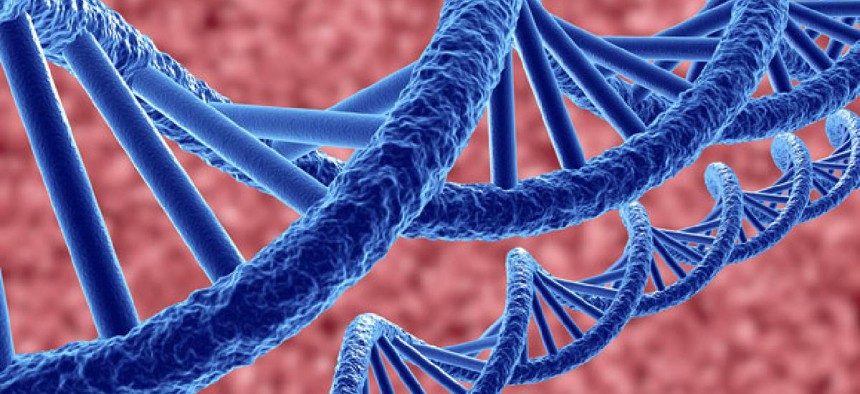Feds pilot ‘rapid DNA’ to potentially identify casualties, immigrants

dencg/Shutterstock.com
Portable genetic scanners spark privacy concerns.
The Pentagon in January will start testing portable DNA analysis equipment intended to identify individuals within an hour, federal research documents show. If successful, government agencies could use the technology to detect border trespassers and enemy combatants, according to the documents.
During the next two years, the University of North Texas will evaluate “rapid DNA” tools for certification before widespread rollout, under terms negotiated with the Defense Biometrics and Forensics Office. The school’s genetics laboratory is the only independent, accredited institution capable of running samples against the FBI’s DNA index, officials stated in a spending disclosure to justify awarding the project without competition.
The testing will involve a prototype funded by the departments of Defense, Justice and Homeland Security called the Accelerated Nuclear DNA Equipment program. The model is a roughly $275,000 desktop-sized device, according to DHS and Pentagon presentations.
“DoD, in partnership with U.S. government interagency partners, has developed technologies that enable automated rapid DNA profiling, while minimizing analytical complexity and user manipulations, for field biometric and forensic applications,” states the Defense justification, which was issued this month. Federal agencies are trying to drive down the price per analysis from $500 to less than $100.
Defense is interested in rapid DNA matching for, among other purposes, quickly identifying casualties and enemies killed in action.
The big push governmentwide is to be able to share DNA profiles across the globe, quickly on a need-to-know basis, Pentagon officials have said.
Civil liberties groups, however, are concerned about mission creep, particularly the inappropriate sharing of foreign nationals’ DNA profiles with DHS for immigration enforcement. A controversial Immigration and Customs Enforcement fingerprinting program called Secure Communities compares the identities of booked offenders in an FBI multi-biometric database with prints in a DHS ID system to determine if suspects are in the country illegally.
A 2010 DHS presentation stated Homeland Security determined it needs rapid DNA analysis to identify border violators and ICE detainees, but does not mention Secure Communities.
Homeland Security currently is designing a rapid DNA system for a variety of potential uses, including “verification of family relationships, countering human trafficking, family reunification, identification of victims following mass casualties, and checks against DNA samples of known criminals,” according to a September DHS privacy assessment. The review stresses that each of these applications will require significant new regulations or regulatory revisions -- as well as “privacy and civil rights assessments.”
Homeland Security already has developed a rapid DNA machine to confirm, on a voluntary basis, kinship during refugee intake, the September assessment states.
Under the new Defense agreement, which is valued between $5,000 and $20,000, the University of North Texas will evaluate the rapid DNA prototype starting January 2013 and complete testing by Dec. 31, 2014. The university operates the only known non-governmental, accredited laboratory with access to the FBI’s National DNA Index System, which aggregates DNA profiles from federal, local and military agencies, officials stated. The FBI system currently catalogs more than 10 million samples from arrestees, immigrant detainees, unidentified human remains, and relatives of missing persons.
Bruce Budowle, the principle investigator at the university’s Institute of Applied Genetics, is a 40-year veteran of the FBI and has authored numerous articles on emerging DNA processing techniques. In June, he published an article for the journal Pathobiology about genetic identification of missing people including victims of major disasters and children who may be victims of human trafficking.
(Image via dencg/Shutterstock.com)



